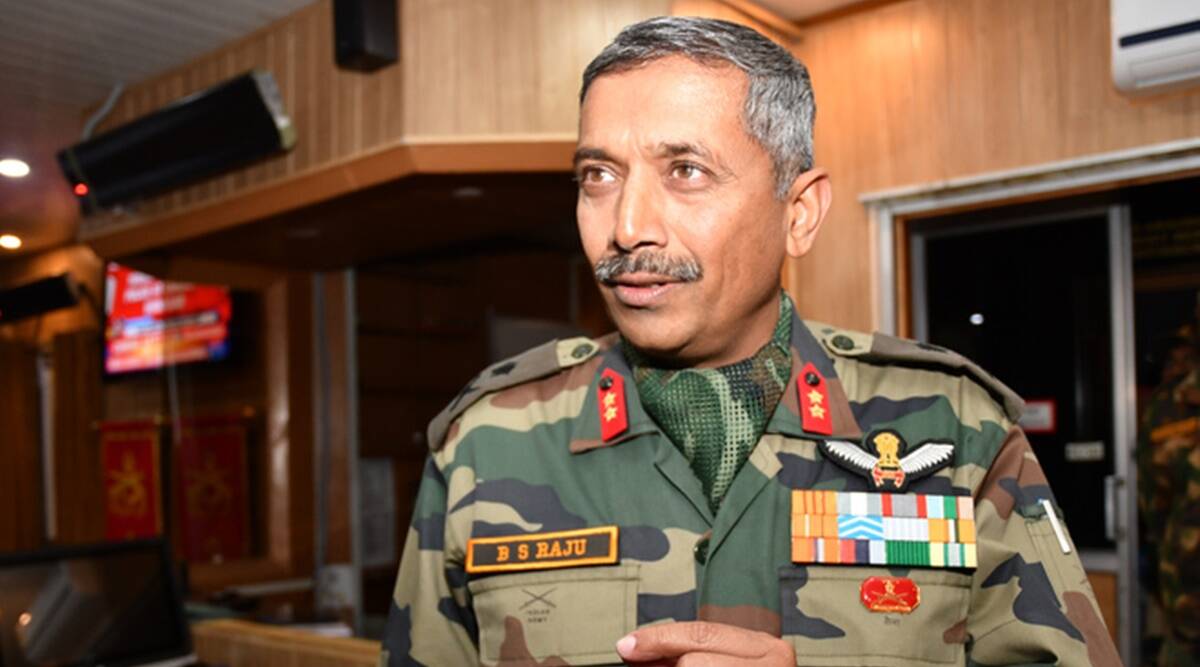
SOURCE: ENS
More than a year after the Central government removed the special status given to Jammu and Kashmir under Article 370 and split the state into two Union Territories, the region is “past that stage of uneasy calm”, according to Lieutenant General B S Raju, Commander of the Army’s Chinar Corps (XV Corps), which is responsible for operations along the Line of Control and against militancy.
Raju was speaking to reporters a day before the Centre amended the Jammu and Kashmir Panchayati Raj Act to include a third tier of governance, at the district level, to set the stage for the Panchayat and District Development Committee elections.
“We have been able to stop infiltration substantially” due to “a combination of a lot of efforts that is being put in by the ground force”, including “additional personnel, additional technology” along the LoC and “drones to monitor movement”, Raju said.
However, he pointed out, there is “no desire on the part of Pakistan to stop infiltration” and cited intercepts of infiltrators saying that they are “unable to go” but still being pushed to do so.
On combating militancy, Raju said: “We have been able to keep the violence level at a threshold…where normal people can continue to do their job… (We) have been able to keep the terrorist numbers also under a fair amount of control.”
Today, north and south Kashmir put together, Raju said, has over 200 militants at any given point of time, “which was like 260 in the beginning of the year”. The Corps Commander attributed this dip to “the close synergy between all the security agencies”.
Army data show that of the 207 active militants in the Valley, 117 are local recruits and 90 from Pakistan. A region-wise break-up of the data shows that north Kashmir has 22 local recruits and 65 Pakistani militants while the south has 95 local recruits and 25 militants from across the border. The data show that while 24 youth joined militancy in north Kashmir, 107 did so in the south.
Of the total number of militants present in Kashmir as of October, 89 are with Lashkar-e-Taiba, of which 51 are Pakistani, the data show. Hizbul Mujahideen has a total 56 militants, with 52 local recruits; Jaish-e-Mohammed has 52; and, Al Badr, which had been dormant for many years, had recruited 16 local youth this year of which 10 are active.
Major General Hashim Bali, who heads the Awantipora-based Victor Force, which is responsible for all counter-terrorism and counter-insurgency operations in south Kashmir, dismissed any concerns about the revival of Al Badr. “If it was potent, its members would have had arms and ammunition commensurate of a potent group,” he said, adding that this has not been visible during operations.
According to official data for 2020, more than one-third of local recruits have a life span of less than three months once they join militancy. Around 44 per cent are killed within six months, and nearly two in every three (62.6 per cent) are killed in less than a year, the data show.
Army data show that of the 131 local recruits in the Valley till September 2020 (up from 117 in 2019), 102 were between the ages of 16 and 25 — 62 were killed, 14 apprehended and two had surrendered. They show that the total number of militants killed in J&K till October is 171, along with 50 apprehended and three surrendered.
“But while we do these operations, I have said this earlier, it doesn’t give us pleasure to kill people, especially people who have just picked up arms a month back,” Corps Commander Raju said.
He said the Army has been trying to encourage local recruits to surrender. “In every operation, we attempt to get people back. Not only in operations, otherwise also a large number of families today are coming out and saying that they want their children to come back. A number of people have come back,” he said.
Raju said the Army will focus more on surrenders, “because for us, getting a man back is more important than neutralising him”. He said “people who have already joined, we are saying you can come back” — and just because they “held a gun and took a photo” does not mean they have to die.






